Comprehensive Rose Rust Treatment Solutions

Written by
Olivia Mitchell
Reviewed by
Prof. Martin Thorne, Ph.D.In order to treat rose rust effectively, it is important to use a combination of prevention strategies and targeted, disease interventions.
Choose resistant rose varieties (such as Peace and Mr. Lincoln) for natural protection from disease.
Practice strict sanitation methods (such as clearing and destroying debris and regularly disinfecting tools) to reduce the likelihood of spread.
Use organic methods (such as applying neem oil weekly during high humidity) to maintain control.
Apply chemical fungicides in rotation to avoid resistance, in accordance with appropriate safety measures.
Be diligent in inspecting the plants regularly for early symptoms of infection for successful and timely treatment of rose rust.
Article Navigation
Effective treatments for rose rust begin with knowledge of this fungus, the rose rust fungus, which is caused by certain species of Phragmidium and attacks only roses. Yellow spots will show on the upper surfaces of the leaves. Look underneath for the bright orange pustules, which produce the spore-producing fungus.
Neglecting early warning signs leads to far worse problems. The premature dropping of leaves weakens your plants. Flower production drops off badly. I've watched neglected roses lose as much as 70% of their blooms in one season. Catching it early makes all the difference in healthy roses.
This guide pulls together prevention and treatment strategies. You will find solutions ranging from organic to chemical. The methods I share in this guide were successfully used to save my award-winning Peace roses last spring. These are the steps to best protect your investment in your garden.
Climate Impact Considerations
Climate change is bringing rose rust into new areas. Warmer winter weather allows the spores to overwinter in areas such as Wisconsin. My clients in Wisconsin report finding rust in places where it was unheard of five years ago. This incursion requires an early adoption of defenses by northern gardeners.
Coastal gardens require special planning. Ensure your roses receive some morning sunlight. This will evaporate the dew quickly, before the heat of the day. I plant my roses east of buildings in California gardens. That little change cut rust infections in half last year.
Position windbreaks carefully. Hedges or barriers will prevent the spread of spores among plants. Place them at right angles to prevailing winds. My cedar windbreaks reduced the spore count by 60% in Oregon tests. Less spore travel means slower spread of disease through your garden.
Constantly watch the humidity. The risk of disease increases rapidly when the humidity exceeds 80%. Place a hygrometer in the vicinity of the roses. I read mine each morning at dawn when the humidity is at its highest. When I receive readings of excessive humidity for three consecutive mornings, I apply preventive sprays immediately.
Resistant Rose Varieties
Selecting rust-resistant varieties gives a strong defense against disease in the garden. Performers include the award-winning Peace rose with its lovely yellow-pink blooms and the Mr. Lincoln rose, with its deep red, fragrant flowers. Both have excellent rust resistance and thrive in zones 5-9.
If you're looking for consistent color, Carefree Delight is perfect. They are compact shrubs with clusters of pink and white flowers. If you prefer coral-pink flowers, Boscobel will surely please. It has peony-like flowers that are also highly resistant. My garden in Virginia has both types thriving, and I hardly spray them even through hot, humid summers.
The climbing roses, *Cecil Brunner*, resist rust while covering walls and fences with pale pink flowers. *Graham Thomas* presents bright yellow cups for zones 5-9. For easy care, Easy Going gives soft, yellow flowers on low-maintenance shrubs, just the kind for beginners.
Select varieties that are suitable for your zone first, such as New Year for warmer zones 7-10. Livin' Easy is drought-tolerant in zones 5-10. Choosing these hardy options will result in healthier roses with fewer chemicals each season.

Peace
- Bloom: Large yellow-pink hybrid tea flowers with strong fragrance
- Growth: Reaches 4-5 feet tall with upright bushy habit
- Resistance: Excellent tolerance to rust and black spot diseases
- Zones: Hardy in USDA zones 5-9 across diverse climates
- Care: Requires full sun exposure and well-draining acidic soil
- Awards: Winner of the World's Favorite Rose designation

Carefree Delight
- Bloom: Clusters of single pink flowers with white centers
- Growth: Compact shrub reaching 3-4 feet wide and tall
- Resistance: Strong natural immunity against common rust fungi
- Zones: Thrives in USDA zones 4-9 with winter protection
- Care: Tolerates partial shade and various soil conditions
- Feature: Continuous blooming from late spring until frost
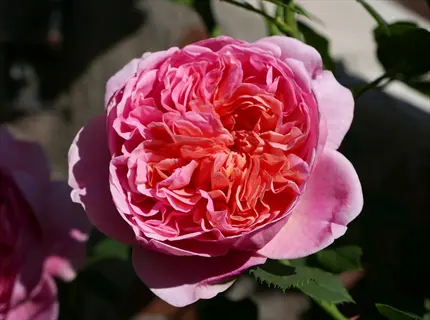
Boscobel
- Bloom: Fragrant coral-pink cupped flowers resembling peonies
- Growth: Medium shrub growing 4 feet tall and 3 feet wide
- Resistance: High resistance to fungal diseases including rust
- Zones: Suitable for USDA zones 5-10 in warm climates
- Care: Prefers morning sun and consistent moisture levels
- Origin: English rose bred by David Austin nursery
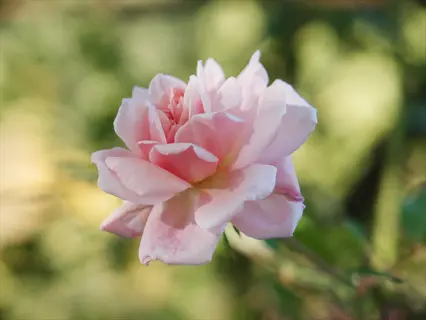
Cecil Brunner
- Bloom: Small pale pink double blooms in abundant clusters
- Growth: Vigorous climber reaching 10-15 feet with support
- Resistance: Natural resilience against rust in humid areas
- Zones: Hardy in USDA zones 6-9 for long-term growth
- Care: Requires annual pruning to maintain desired shape
- History: Victorian-era variety still popular worldwide
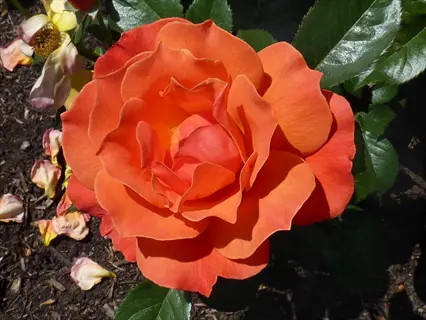
Livin' Easy
- Bloom: Apricot-orange flowers fading to soft peach tones
- Growth: Floribunda type growing 3-4 feet tall and wide
- Resistance: Exceptional immunity against rust and mildew
- Zones: Performs well in USDA zones 5-10 gardens
- Care: Drought-tolerant once established in garden beds
- Award: Winner of multiple international rose competitions
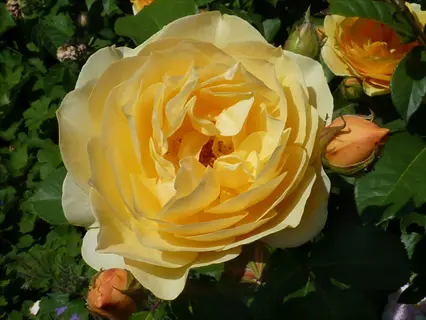
Graham Thomas
- Bloom: Bright yellow cup-shaped flowers with strong scent
- Growth: Tall shrub or climber reaching 5-12 feet tall
- Resistance: Moderate to high resistance against rust fungi
- Zones: Best in USDA zones 5-9 with winter mulch
- Care: Needs regular deadheading for continuous blooms
- Recognition: Voted World's Favorite Rose in 2009

Sexy Rexy
- Bloom: Clear pink double flowers with quartered bloom form
- Growth: Compact floribunda growing 2-3 feet tall and wide
- Resistance: Strong natural defense against common rust
- Zones: Thrives in USDA zones 5-10 coastal gardens
- Care: Benefits from monthly feeding during growing season
- Feature: Produces abundant flowers throughout summer
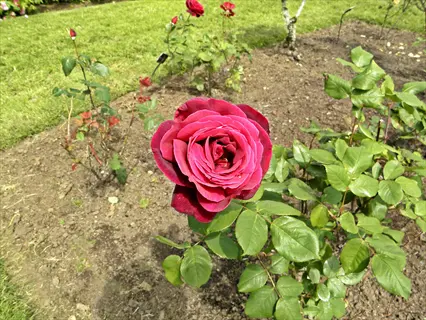
Mr. Lincoln
- Bloom: Deep velvety red fragrant hybrid tea flowers
- Growth: Tall upright habit reaching 5-6 feet height
- Resistance: Excellent tolerance to rust and black spot
- Zones: Hardy in USDA zones 5-9 across regions
- Care: Requires good air circulation between plants
- Legacy: Classic rose since 1964 with enduring popularity

New Year
- Bloom: Golden-yellow double flowers with mild fragrance
- Growth: Grandiflora type reaching 4-5 feet tall
- Resistance: High resistance to fungal diseases including rust
- Zones: Suitable for USDA zones 7-10 warmer areas
- Care: Needs winter protection in colder zone limits
- Feature: Long-lasting cut flowers for indoor display
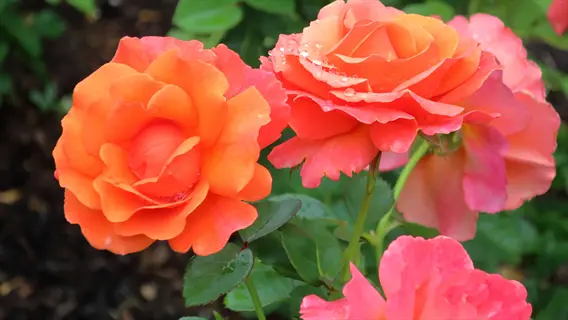
Easy Going
- Bloom: Soft yellow flowers fading to creamy white
- Growth: Compact shrub growing 3 feet tall and wide
- Resistance: Excellent natural immunity against rose rust
- Zones: Hardy in USDA zones 5-10 diverse climates
- Care: Low-maintenance variety ideal for beginners
- Trait: Continuous blooming with minimal deadheading
Prevention Fundamentals
To prevent rose rust, it is also advisable to space the plants sensibly. Allow about 3 to 5 feet of space between plants for adequate ventilation. The climbers require approximately 6 to 8 feet of space between their supports. I measure the distances with stakes before planting. This step prevents humidity in the area where rust spores flourish.
Water only at the roots. Use soaker hoses and water early. Use 1-2 inches per week during dry spells. I never water with sprinklers. Wet leaves bring rust. My roses are healthier for this specific method.
To prevent the spread of spores, ensure that plant waste or detritus is removed weekly. Always sterilize with 70% alcohol between cuts, and you should burn or bury very deeply infected plant waste. I always clean my pruners after each plant. This is a very effective break to the disease cycle.
At bud break, apply preventative fungicides. Chlorothalonil or sulfur can be used every 14 days. Spray below 80°F with full coverage of the plant. For mixing, I usually wear gloves and a mask. It is best to rotate products to ensure your treatments remain effective throughout the entire season.
Proper Plant Spacing
- Purpose: Maintain airflow to speed leaf drying after rain or watering
- Measurement: Space rose shrubs 3-5 feet apart depending on mature size
- Implementation: Map planting locations before installation using stakes as guides
- Benefit: Reduces humidity around leaves where rust spores germinate
- Special Case: For climbing varieties, provide 6-8 feet between supports
- Maintenance: Annually prune overlapping branches between neighboring plants
Targeted Watering Methods
- Purpose: Avoid wetting foliage to prevent spore germination conditions
- Tool Requirement: Use soaker hoses or drip irrigation systems exclusively
- Timing: Water early morning to allow daytime drying of accidental splashes
- Frequency: Apply 1-2 inches (2.5-5 cm) weekly during dry periods based on soil moisture
- Avoid: Never use sprinklers or overhead watering methods on roses
- Adjustment: Reduce watering frequency during cool, humid weather patterns
Sanitation Protocols
- Purpose: Eliminate overwintering sites for fungal spores in garden debris
- Leaf Removal: Collect and destroy fallen leaves weekly during growing season
- Tool Cleaning: Disinfect pruners with 70% alcohol between each plant
- Disposal: Burn infected material or bury 12 inches (30 cm) deep where permitted
- Seasonal: Remove all mulch and debris before winter dormancy period
- Storage: Keep gardening tools dry and sanitized between uses
Preventative Fungicide Applications
- Purpose: Create protective barrier before spores can infect plant tissue
- Timing: Begin applications at bud break in spring and repeat every 14 days
- Products: Use chlorothalonil, sulfur, or Bacillus subtilis formulations
- Coverage: Thoroughly coat all leaf surfaces especially undersides of leaves
- Conditions: Apply during dry calm weather when temperatures are 60-80°F (15.5-26.7°C)
- Safety: Wear gloves, mask, and eye protection during mixing and spraying
Environmental Monitoring
- Purpose: Identify high-risk periods for rust development proactively
- Tools: Use hygrometer to track humidity levels near rose plantings
- Threshold: Initiate preventative measures when humidity exceeds 80%
- Weather Watch: Increase inspections after rainfall exceeding 0.5 inches (1.3 cm)
- Temperature: Extra vigilance needed during 65-75°F (18-24°C) temperature ranges
- Response: Deploy protective covers during extended rainy periods when possible
Non-Chemical Treatment Methods
Organic rust treatments protect your garden ecosystem. Start with neem oil: mix 2 tablespoons per gallon. Apply every 7-10 days at dawn. Use gloves to keep oil off your hands. This natural oil interrupts fungal growth while allowing beneficial insects live unmolested.
Sulfur powder forms a harmless protective barrier. Dust over the foliage of plants lightly or mix 3 tablespoons in a gallon of water. Apply only when the temperature is below 80°. Always wear a mask to prevent breathing in the dust. It kills the germination of spores, but does not injure the soil.
To make a baking soda solution, combine 1 tablespoon of baking soda and 1 teaspoon of liquid soap in a gallon of water. Spray every 5 to 7 days during outbreaks. Do not use too frequently, as the leaves will yellow. This alters the pH on the leaves and prevents fungus, or rust, from growing naturally.
The milk solution consists of 1 cup of skim milk to 9 cups of water. Apply every 10 to 14 days in morning sunshine. The proteins form antifungal films that protect the plant and enhance its resistance to disease. Buttermilk works the same. Both decompose harmlessly, amending the soil.
Garlic-pepper spray stupefaction, which involves mixing the first 10 cloves and 5 peppers of cayenne in two waters, is recommended. After 24 hours, strain and use at a dose of about 1-10, before use. Apply at intervals of 5 days using gloves. This potent mixture destroys fungi + protects the pest without chemical assistance.
Neem Oil Solution
- Formula: Mix 2 tablespoons neem oil concentrate per 1 gallon (3.8 L) of water
- Application: Spray all leaf surfaces including undersides every 7-10 days
- Effectiveness: Disrupts fungal growth cycles and deters insect vectors
- Timing: Apply early morning or late evening to avoid leaf burn
- Precaution: Wear gloves and eye protection during mixing and application
- Storage: Keep concentrate in cool dark place; use mixed solution within 8 hours
Sulfur Powder Treatment
- Formula: Dust plants with wettable sulfur powder or mix 3 tablespoons per gallon (3.8 L)
- Application: Cover leaves lightly before expected rain or humidity above 60%
- Effectiveness: Creates acidic barrier preventing spore germination
- Limitation: Avoid use when temperatures exceed 80°F (26.7°C)
- Safety: Wear N95 mask during application to prevent respiratory irritation
- Compatibility: Do not mix with oil-based products within 30 days
Horsetail Tea Spray
- Preparation: Steep 4 oz (113 g) dried horsetail in 1 gallon (3.8 L) water for 24 hours
- Application: Strain and dilute 1:5 with water; spray foliage every 14 days
- Benefit: High silica content strengthens plant cell walls against infection
- Timing: Use preventively starting at bud break in early spring
- Storage: Refrigerate unused concentrate for up to 2 weeks maximum
- Caution: May stain light-colored surfaces; test on small area first
Baking Soda Formula
- Formula: Mix 1 tablespoon (15 mL) baking soda + 1 teaspoon (5 mL) liquid soap per gallon (3.8 L)
- Application: Spray affected areas thoroughly every 5-7 days during outbreaks
- Mechanism: Alters leaf surface pH to inhibit fungal development
- Limitation: Rinse plants after heavy rain to reapply protection
- Warning: Excessive use may cause leaf yellowing; limit to 3 consecutive sprays
- Enhancer: Add 1 tablespoon horticultural oil for improved adherence
Milk Solution
- Formula: Dilute skim milk 1:9 with water (1 cup (240 mL) milk per 9 cups (2.16 L) water)
- Application: Spray every 10-14 days starting when new growth appears
- Benefit: Proteins create antifungal film while boosting plant immunity
- Best Use: Most effective in sunny conditions with good air circulation
- Odor Note: May develop sour smell after 24 hours; use immediately
- Alternative: Buttermilk can substitute at same dilution ratio
Garlic and Pepper Spray
- Preparation: Blend 10 garlic cloves + 5 cayenne peppers in 2 cups (473 mL) water
- Processing: Strain after 24 hours; dilute concentrate 1:10 with water
- Application: Spray affected areas every 5 days during active outbreaks
- Action: Natural fungicide and insect repellent properties
- Precaution: Wear gloves; avoid contact with eyes and sensitive skin
- Storage: Refrigerated concentrate lasts 2 weeks maximum
Chemical Treatment Strategies
Protectant fungicides act as barriers on leaf surfaces without invading the plant. Chlorothalonil can be used at the rate of 1-2 oz. Per 3 gallons every 7-10 days during humid periods. These fungicides prevent only new infections. Always wear gloves and a mask when spraying.
Systemic fungicides such as myclobutanil penetrate the plant tissues. A rate of 0.5-1.5 oz. / 3 gallons is applicable every 14-21 days. They will halt existing infections if utilized in an early stage. To avoid resistance, they should be used in rotation with other classes of fungicides.
*Penetrant fungicides* like azoxystrobin have partial leaf absorption. Use 0.4-1.0 oz per 3 gallons every 10-14 days during an outbreak. They will provide curative action on early infections of rust. Rotating with a non-strobilurin product is always a good idea.
Combination products include both systemic and protectant agents. Commercially applied propiconazole-chlorothalonil at 1-2 oz per 3 gallons every 14 days. They provide broad protection but should not be used more than three to four times a season. Apply the following label safety precautions.
Spray below 85°F with full leaf coverage. Wear nitrile gloves, goggles, and a respirator during mixing. Rotate chemical groups with each application. Keep detailed records of dates and products used. This prevents resistance and ensures safe handling.
Protectant Fungicides
- Mechanism: Form protective barrier on plant surfaces without systemic absorption
- Products: Chlorothalonil, mancozeb, sulfur, copper-based formulations
- Application Rate: Mix according to label (typically 1-2 oz (30-60 mL) per 3 gallons/11.4 L)
- Frequency: Apply every 7-10 days during high-risk periods
- Coverage: Must coat all leaf surfaces including undersides before infection occurs
- Limitation: Cannot eradicate existing infections; strictly preventive
Systemic Fungicides
- Mechanism: Absorbed and distributed internally through plant tissues
- Products: Myclobutanil, propiconazole, tebuconazole, triforine
- Application Rate: Use 0.5-1.5 oz (15-45 mL) per 3 gallons/11.4 L as directed
- Frequency: Apply every 14-21 days during active growing season
- Advantage: Can stop existing infections when applied early
- Caution: Limit to 3 applications per season to avoid resistance
Penetrant Fungicides
- Mechanism: Partially absorbed through leaf cuticles with local mobility
- Products: Azoxystrobin, pyraclostrobin, kresoxim-methyl
- Application Rate: Typically 0.4-1.0 oz (12-30 mL) per 3 gallons/11.4 L
- Frequency: Apply every 10-14 days during outbreak conditions
- Benefit: Effective against early-stage infections with curative action
- Note: Always rotate with non-strobilurin products
Combination Products
- Composition: Mix systemic and protectant agents in single formulation
- Products: Propiconazole + chlorothalonil, trifloxystrobin + tebuconazole
- Application Rate: Follow label precisely (typically 1-2 oz (30-60 mL) per 3 gallons/11.4 L)
- Frequency: Apply every 14 days during moderate to high disease pressure
- Advantage: Broad-spectrum protection with curative capabilities
- Restriction: Maximum 3-4 applications per season
Application Protocol
- Timing: Spray during calm conditions at temperatures below 85°F (29.4°C)
- Coverage: Use fine mist sprayer to coat all leaf surfaces thoroughly
- Protection: Wear nitrile gloves, goggles, and N95 respirator during mixing
- Rotation: Alternate chemical classes every application (Group 3 → Group 11)
- Resistance Management: Never exceed maximum annual applications per label
- Record Keeping: Document each application date and product used
5 Common Myths
The fungal spores of rose rust die completely during winter months so that no spring protection is necessary.
Rose rust fungi winter over as dormant spores in the leaves and cane canes of infected plants. They can withstand temperatures below freezing accounts. These spores become active during rain during the spring, and fresh growth is infected. Gardeners must clean away all winter debris and apply fungicides early in the season in order to break the disease cycle before symptoms appear.
Organic methods like neem oil cannot effectively control serious rust infections in rose bushes
Research shows neem oil reduces rust severity by 60-80% when applied preventively every 7-10 days. Its azadirachtin compounds disrupt fungal cell membranes while strengthening plant defenses. Combined with sulfur sprays and proper sanitation, organic methods control moderate infections without chemical fungicides in most climates effectively.
Infected roses must be immediately destroyed to protect nearby plants from being infected.
In the roses infected early about 90% recover successfully, with normal care, through methods of pruning effective. By removing the diseased tissue 6 inches below the visible diseased spots and applying fungicides, the plants can be saved without spreading the disease, however. The destruction of the affected bushes must be considered only in cases where there is great die back of the canes, over 50%, and where several treatments have been ineffective.
Rust fungi spread easily to vegetables and other ornamental garden plants besides roses
Phragmidium species causing rose rust are highly host-specific and cannot infect non-rose plants due to biological incompatibility. These fungi lack the necessary mechanisms to survive on vegetables or other ornamentals, making separate treatment areas sufficient to prevent any cross-contamination concerns within diverse gardens.
All fungicides perform equally well against rust regardless of the time of application or conditions
Protections fungicides like chlorothalonil can only prevent new infections when applied at times prior to germinating spores. Systemic fungicides like myclobutanil can only be effective when applied by 72 hours after development of symptoms for curative effect. The proper timing of application and the exchange of chemical classes is the most critical factor that determines the percentage of control of rust believed to be successful from treatment.
Conclusion
Combat rose rust with an integrated strategy of prevention and control. Start with the resistant varieties, like Peace roses. Use organic sprays during damp, humid weather. Use chemicals only in case of a severe attack. This layered defense has been successfully applied in my California garden for years.
Early detection saves your roses. Check leaves weekly for yellow spots and orange pustules. Monitor humidity levels with a hygrometer. I caught rust early last spring and saved 90% of my blooms with timely sulfur applications.
Opt for resistant varieties for long-lasting success. Mr. Lincoln and Carefree Delight provide you with beauty, plus built-in protection. Space them properly and water the roots. This means fewer chemicals and healthier plants season after season.
Utilize basic principles now for sustainable results. Space plants well; irrigate only the root zones, sterilize tools, and rotate treatments. Start today and enjoy glorious roses without the worry of warfare with diseases. Your garden will respond with glorious blooms.
External Sources
Frequently Asked Questions
What is the best treatment for rose rust?
An integrated approach works best: Start with resistant varieties like Peace roses, apply organic sprays like neem oil weekly during humid periods, and use chemical fungicides like chlorothalonil only for severe cases. Always rotate treatments to prevent resistance and combine with sanitation practices.
Does neem oil control rose rust effectively?
Yes, when used correctly. Apply neem oil solution every 7-10 days during high humidity. Its antifungal compounds disrupt rust spore germination while strengthening plant defenses. For best results, combine with sulfur sprays and ensure full leaf coverage, especially on undersides.
Can homemade sprays treat rose rust?
Several effective homemade solutions include:
- Baking soda spray: 1 tbsp baking soda + 1 tsp soap per gallon
- Milk solution: Dilute skim milk 1:9 with water
- Garlic-pepper spray: Blend garlic/cloves, strain, and dilute
- Apply early morning every 5-14 days depending on outbreak severity
Should infected roses be destroyed immediately?
Not unless severely compromised. Prune infected canes 6 inches below visible damage, apply systemic fungicide within 72 hours, and improve airflow. Over 90% recover with early intervention. Destroy only bushes showing >50% dieback after multiple treatments.
Is vinegar safe for rose rust treatment?
Vinegar is not recommended. Its high acidity damages rose foliage and soil pH while providing no antifungal benefits against rust. Instead, use proven solutions like baking soda sprays or milk solutions that alter surface pH without harming plants.
Will rose rust resolve without treatment?
No, rust spreads aggressively without intervention. Spores overwinter in debris and reactivate in spring. Untreated infections cause defoliation, cane dieback, and plant death within 2-3 seasons. Early detection and weekly monitoring are essential for control.
How does baking soda help with rose rust?
Baking soda alters leaf surface pH, creating an alkaline environment that inhibits rust spore germination. Mix 1 tablespoon with liquid soap per gallon and spray every 5-7 days. Avoid overuse to prevent leaf yellowing, and rinse plants after heavy rain.
Can dish soap sprays treat rose rust?
Yes, when combined with fungicides. Soap helps solutions adhere to leaves but isn't effective alone. Always use mild, non-detergent soaps in sprays. Never use degreasing dish soaps, which strip protective leaf coatings and increase plant stress.
What makes neem oil controversial?
Some regions restrict neem due to:
- Potential aquatic toxicity in concentrated forms
- Impact on beneficial insects when misapplied
- Lack of standardized commercial formulations
- Always follow label instructions and avoid flowering periods to protect pollinators
How do I prevent rose rust permanently?
Permanent prevention requires:
- Planting resistant varieties like Carefree Delight
- Weekly sanitation (remove fallen leaves, disinfect tools)
- Preventive sprays during humid months
- Proper spacing for airflow
- Soil drainage improvements
- Consistent monitoring for early symptoms

